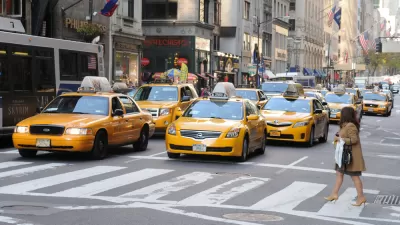Robin Chase co-founded ZipCar in 2000. Now she's working on GoLoco, a ride sharing system based on the ZipCar platforms.
"Urban Omnibus: So, as you have moved from Zipcar to GoLoco, from car sharing to ride sharing, do you see ride sharing as more of a national set of strategies?
Chase: Yes, car sharing only works in dense metropolitan areas or in cases where people don't need a car to get to work. If you need a car to get to work, you're going to have to own your own car. The cost of car sharing is too high for a daily commute. But, then again, according to the National Households Consumer Survey, across the nation it costs $24 per day on average that people are spending in America on their car, day in and day out. If I were to tell you that it was going to cost $125 a week to go to work, you would say, no way, I'm not going to do it. But we are doing it - we just don't realize we're doing it.
That's why I did GoLoco - I said, what about all those other people who are feeling similar transportation and mobility pains but they need a car to get to work? Ride sharing is for those people.
Urban Omnibus: Can you give us ride sharing 101? How can GoLoco change how we get around?
Chase: The big idea for ride sharing and for GoLoco is to think of your car, your expenses, your friends, and your trips as part of your own personal public transportation system. Your friends and their cars and their trips are ways that you can get around. It builds on the idea of long tail media and long tail economics. Ride sharing is the long tail of public transportation."
FULL STORY: A Conversation with Robin Chase

Maui's Vacation Rental Debate Turns Ugly
Verbal attacks, misinformation campaigns and fistfights plague a high-stakes debate to convert thousands of vacation rentals into long-term housing.

Planetizen Federal Action Tracker
A weekly monitor of how Trump’s orders and actions are impacting planners and planning in America.

San Francisco Suspends Traffic Calming Amidst Record Deaths
Citing “a challenging fiscal landscape,” the city will cease the program on the heels of 42 traffic deaths, including 24 pedestrians.

Defunct Pittsburgh Power Plant to Become Residential Tower
A decommissioned steam heat plant will be redeveloped into almost 100 affordable housing units.

Trump Prompts Restructuring of Transportation Research Board in “Unprecedented Overreach”
The TRB has eliminated more than half of its committees including those focused on climate, equity, and cities.

Amtrak Rolls Out New Orleans to Alabama “Mardi Gras” Train
The new service will operate morning and evening departures between Mobile and New Orleans.
Urban Design for Planners 1: Software Tools
This six-course series explores essential urban design concepts using open source software and equips planners with the tools they need to participate fully in the urban design process.
Planning for Universal Design
Learn the tools for implementing Universal Design in planning regulations.
Heyer Gruel & Associates PA
JM Goldson LLC
Custer County Colorado
City of Camden Redevelopment Agency
City of Astoria
Transportation Research & Education Center (TREC) at Portland State University
Jefferson Parish Government
Camden Redevelopment Agency
City of Claremont





























